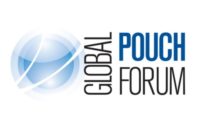Global Pouch Forum is under a week away, and it is shaping up to be one of the packaging industry’s biggest events of the year. Featuring a variety of fascinating exhibitors, insightful guest speakers, and thought-provoking panel discussions, Global Pouch Forum will take place from June 6-8, at the Hyatt Regency O’Hare in Rosemont, Illinois. As a preview of the event, Packaging Strategies was able to talk to Thomas Clark, Ph.D., Technical Market Leader, Packaging Resin & Films, Nylon Sustainablity Leader, AdvanSix Inc., and Jake Branyon, Director of R&D, Sonoco. Both are taking part in “The Future of Flexible Packaging,” a panel discussion that will cover key issues affecting the industry moving forward. Below are their responses to some questions leading up to the discussion:
PS: Where are we as an industry in our move toward using more recyclable, compostable, and generally sustainable flexible plastic and paper packaging?
TC: It’s clear that the packaging industry is not on track to achieve the 2025 sustainability goals that were set. Converters have commercialized recycle-ready, recycled content, and biobased packaging, but brand owners have not moved those onto store shelves in significant volumes. Much of that is due to concerns regarding cost and broad availability of suitable solutions, along with an uncertainty of consumers’ willingness to pay for them. For example, I’ve heard reports of difficulties finding recycled resin at the required melt flow or quality and premiums up to 2x for pyrolysis-based rPE, making it a tough sell to margin conscious CPGs that are unwilling to sacrifice performance or shelf life. Paper packaging is seeing a resurgence, with coated paper pouches for snacks and rigid molded containers that have a bag or bottle on the inside. However, it’s far from obvious that those are actually more sustainable in terms of expected recycling rates or an improved carbon footprint.
JB: Sonoco’s EnviroFlex® PE, store drop-off recyclable, and EnviroFlex® Paper, curbside recyclable, solutions are great examples of the progress made in the industry over the last several years. These advancements are made possible through collaboration with suppliers, consumers, customers, industry organizations and recyclers. If this progress is any indication of what’s to come, we should expect material science and consumer expectations to continue to catalyze developments for more sustainable packaging solutions.
PS: Where is the global CPG flexible packaging market headed?
TC: Flexible packaging will continue to grow since it serves its purpose well in terms of consumer preferences, product protection, and smaller carbon footprint versus alternative options. Having started in the food packaging industry ~50 years ago by placing glass milk bottles from my family’s dairy on doorsteps and more recently leading glass-to-plastic conversions at a major food company, I’m not expecting a major return to rigid packaging. Recent reports of consumer resistance in Tesco’s in-store prefill pilot are hardly surprising, given that that the cost of cleaning and prefilling reusable packaging could sometimes be more than the actual product inside! Furthermore, McDonald’s recent Kearney reuse study also predicts higher packaging waste, along with increases in GHG emissions and cost versus recycling…that’s not sustainable. Challenged by sustainability drivers, suppliers have responded in the past 3 years with innovations in resin/additives, film technology, and FFS equipment. However, brands and converters must reconcile aspirational goals with infrastructure and economic limitations.
JB: In the short term we see CPGs focused on currently recyclable materials and virgin plastic reduction. As more recyclable packaging is used, the ongoing push will be to ensure those packages are being recycled. Long term, there are projections that compostable packaging will grow significantly. Consumer education and infrastructure will be key to recyclable and compostable packaging being successful.
PS: How can we establish common-sense EPR programs and next-generation sustainable packaging solutions?
TC: EPR programs should encourage innovations that address the true end-goals, which are diverting waste from landfills, reducing litter, and minimizing carbon footprint. They should not focus exclusively on intermediate recycling goals or preemptively picking winners and losers since we will certainly need multiple solutions to reach those goals. To meet recycled content goals and reduce GHG emissions, any subsequent EPR guidance should explicitly encourage chemical recycling, leverage the mass balance approach, and include post-industrial recycled materials (based on ISO 14021 definition) when they help meet those end-goals. Revenue generated from EPR fees should be spent on developing more data concerning the cost/benefits of various solutions, which could support education efforts for consumers, legislators, and the industry.
JB: EPR programs should acknowledge all aspects of sustainability and take those into account when determining what is accepted for recycling and what the fees will be. Input from industry organizations who are working on innovative collection and design systems should be considered. EPR programs should not just focus on what is collected today, but what could be collected with existing technology.
To attend Global Pouch Forum, please visit here.



